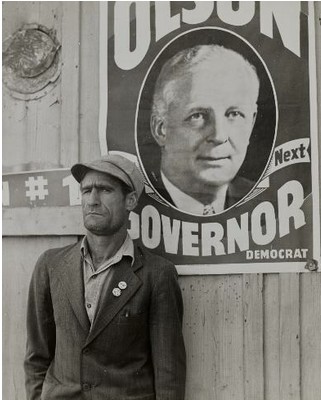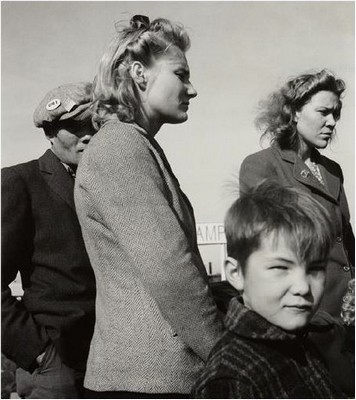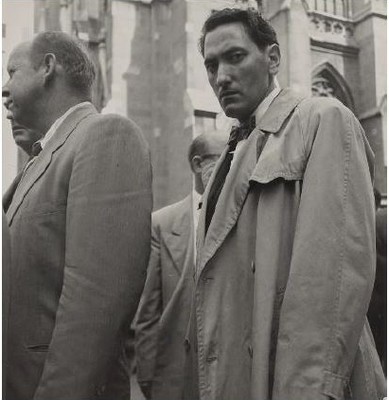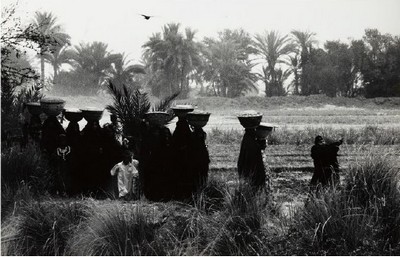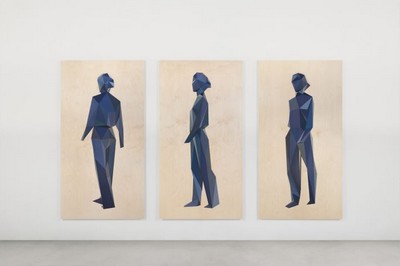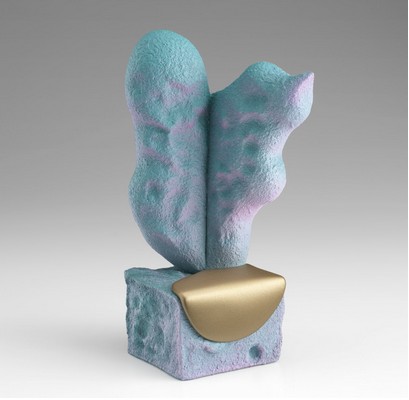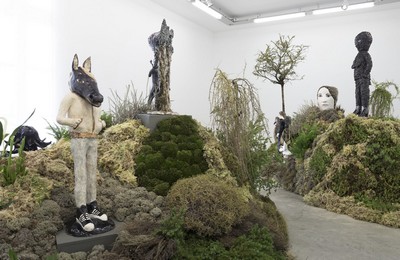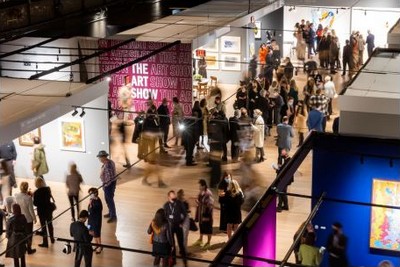The Art Show 2022 Solo Exhibitions
Park Avenue Armory, New York
November 3 - 6, 2022
Photo Courtesy the ADAA / The Art Show
On the occasion of its 60th anniversary, the Art Dealers Association of America (ADAA) announced the 34th annual edition of The Art Show, one of the longest-running art fairs in the USA. This year, The Art Show features a record number of booths from 78 ADAA member galleries. Of these, an impressive 55 booths features solo presentations that explore the work of just one artist, allowing visitors thoughtful, curated experiences akin to those found in galleries––also a record for the fair.
The 55 booths offering solo presentations––promoting an atmosphere of closelooking and one-on-one conversations with dealers and artists––feature a wide range of artists, and showcase key art historical figures of the 19th century alongside emerging voices in contemporary art from diverse, international locales including Brazil, Côte d'Ivoire, and Beijing. They include:
• Drawings and sculptures by Ricardo Brey, presented by Alexander Gray Associates.
• An exhibition from Anthony Meier Fine Arts of paintings on vintage museum sheets created over the past decade by Sarah Cain.
• A dozen new large-format paintings by Zio Ziegler, presented by Almine Rech, from the artist’s Essential Figures series, which features improvised linework and layers of amorphous forms.
• Anton Kern Gallery’s booth of work by Marcus Jahmal, whose interiors, landscapes, and portraiture are united by the artist’s deep brushwork and unique sense of color.
• Felt works by Robert Morris (1931-2018), presented by Castelli Gallery, where the artist first exhibited this same body of work in 1968.
• A selection by Cheim & Read of rare Lynda Benglis Lagniappe sculptures from 1976-1979, which represent a direct, eccentric, and erotic response to Minimalism.
• A presentation by David Kordansky Gallery of new paintings by Raul Guerrero, who has made work informed by his experiences as an American of Mexican ancestry in Southern California.
• Significant watercolors on paper by Alice Neel (1900-1984), presented by David Zwirner.
• Garth Greenan Gallery’s presentation of works from 1969-1971 by Gladys Nilsson, a member of the Hairy Who, which features her silver ink on black paper drawings and a rare early large-scale painting.
• A show of sculptures by the American master ceramicist Toshiko Takaezu (1922-2011), presented by James Cohan.
• An exhibition presented by James Fuentes of work by Trinidadian-America painter, photographer, dancer, choreographer, actor, composer, and costume designer Geoffrey Holder, curated by Hilton Als.
• New work by South African artist Nicholas Hlobo, who uses tactile materials such as ribbon, leather, wood, and rubber that he melds and weaves together into hybrid objects, presented by Lehmann Maupin.
• A monumental painting from Liu Xiaodong’s Shaanbei project, Reforming Loafers 1 (2018), presented in Lisson Gallery’s booth, alongside works on paper and sketchbooks.
• New and historically important works by William Kentridge in a booth presentation by Marian Goodman Gallery, featuring works on paper, sculpture, and prints.
• An exhibition by Mitchell-Innes & Nash of Antônio Henrique Amaral (1935-2015), a key figure in Brazilian and Latin American art who came of age under military dictatorship in Brazil in 1964.
• A presentation of new mixed-media paintings by Erik Lindman in Peter Blum Gallery’s booth that will feature the artist’s process-driven practice through which he creates multilayered and tactile non-representational work with repurposed found materials.
• New paintings by Ross Bleckner, presented by Petzel, including those that feature flowers as a recurring motif as well as others more closely aligned with pure abstraction.
• A focused presentation by Sperone Westwater of recent photographic works, several of which were created specifically for The Art Show, by artist Joana Choumali from Côte d'Ivoire.
• A new body of work by Sprüth Magers’s gallery artist Louise Lawler.
• A presentation of historical works by artist Julio Le Parc by Nara Roesler, which focuses on the artist’s iconic Alchimie series and is punctuated by a kinetic sculpture.
The remaining booths at The Art Show are no less rigorous in their curation, and feature an outsized number of presentations that focus on female artists. Highlights from those multi-artist booths include:
• An intergenerational cohort of women artists from GAVLAK’s program, spanning more than 75 years, which continues the gallery’s commitment to expanding the contemporary art discourse to be more inclusive of the contributions of female artists.
• A survey of work by eight women photographers who focused their gaze on the streets around them, presented by Howard Greenberg Gallery.
• George Rickey’s (1907-2002) kinetic sculptures and Robert Motherwell’s (1915-1991) celebrated Drunk with Turpentine series, which, presented together by Kasmin, muse on movement and gesture.
• A cross-generational presentation with Washington, D.C.-based artist and former gallerist Alonzo Davis and Vancouver-based artist Christine Howard Sandoval, presented by parrasch heijnen.
• A booth on the theme of "Realism: Then and Now," organized by Jill Newhouse Gallery following a series of exhibitions showing the influence of 19th century art on contemporary art.
• A selection of works by artists from Matthew Marks Gallery, including Leidy Churchman, Jasper Johns, Ellsworth Kelly (1923-2015), Simone Leigh, and Charles Ray, among others.
• A presentation by Paula Cooper Gallery focusing on staple works from the 1960s and 1970s by gallery artists such as Carl Andre, Mark di Suvero, and Claes Oldenburg, as well as other major figures from the period.
• Five contemporary female American artists working within abstraction, presented by Rhona Hoffman Gallery, which will feature: Torkwase Dyson, Julia Fish, Judy Ledgerwood, Martha Tuttle, and Amanda Williams.
THE ART SHOW
The Park Avenue Armory
Park Avenue and 67th Street, New York
ADAA
205 Lexington Avenue, New York, NY 10016





